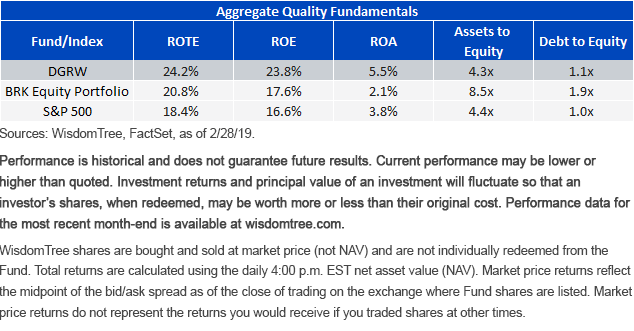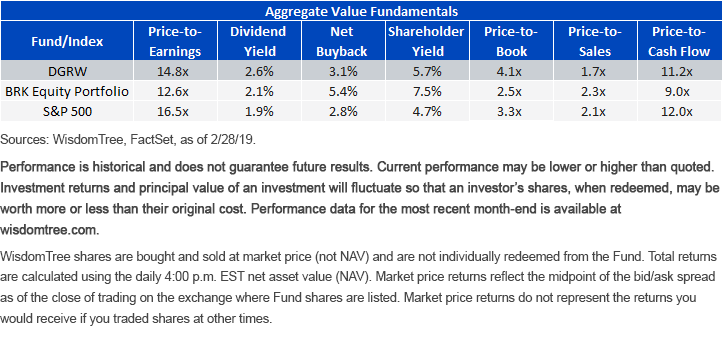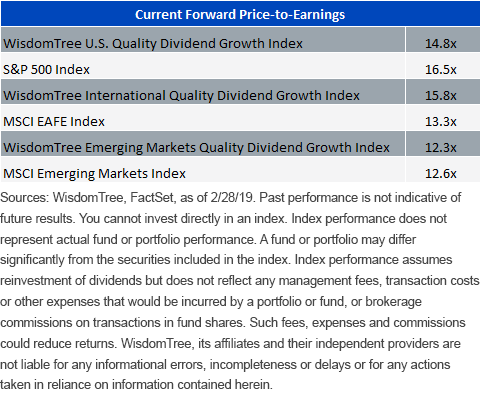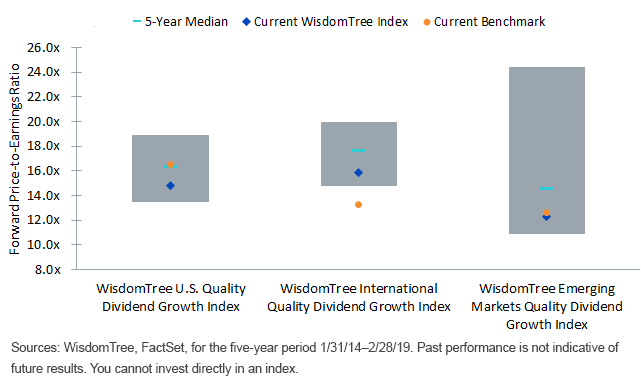Stocks That Rival Buffett’s Basket of Companies



Warren Buffett views Berkshire Hathaway’s stock portfolio as more than a basket of tickers.
In his 2018 letter to Berkshire Hathaway shareholders, Buffett wrote that stock performance converges with business performance over time if the original purchase price is not excessive.
He expects the returns on Berkshire’s equity portfolio to be commensurate with the returns of the underlying businesses. And his basket of stocks earns approximately 20% on net tangible equity, which is almost exactly what his portfolio has returned over the long run.1
Return on equity (ROE) is a metric Buffett has written on extensively: it’s a “quality” indicator for stocks, reflecting how much profit a business earns relative to its net equity capital.
Buffett and his business partner Charlie Munger are known for saying, “It is far better to buy a wonderful business at a fair price than to buy a fair business at a wonderful price.”
When we launched our quality dividend growth family of Indexes, we described the screening process as including a “Buffett factor” in stock selection.
The Indexes utilize both ROE and return on assets (ROA) as part of the selection requirements. Using ROA as a screening criterion penalizes firms using leverage to drive ROE.
Buffett has been hoarding cash—he now has over $100 billion to put to work. He worries that market opportunities are limited because of rising prices and high valuations to complete full acquisitions.
Yet there is a basket of 300 U.S. listed stocks that offer similar fundamental attributes to his current collection of equity holdings.
Let’s take a look.
DGRW: 300 Candidates with Similar Aggregate Characteristics as Buffett’s Portfolio
The WisdomTree U.S. Quality Dividend Growth Fund (DGRW) invests in high-quality companies within the dividend-paying universe.
We performed a quality check on our collection of tickers and compared it against Berkshire’s equity portfolio.
Based on Buffett’s preferred measure of business performance, return on net tangible equity, DGRW has a higher level of profitability than Berkshire’s latest equity portfolio.
Figure 1: Aggregate Quality Fundamentals

For standardized performance of DGRW, please click here.
Also key to Buffett’s investment model is his requirement that companies do not employ excessive levels of debt. DGRW’s assets-to-equity ratio—a measure of how much of a company’s assets are financed with debt and other liabilities—is significantly lower than Berkshire’s portfolio. Berkshire’s higher assets-to-equity ratio and lower ROE and ROA are driven by large positions in Financials which operate with higher levels of assets and liabilities than other sectors. At the time of writing, 9.5% of DGRW’s weight is in the Financials sector.
The key caveat to Buffett’s argument that business performance converges with investment returns is that valuations must be reasonable.
He explains, “On occasion, a ridiculously-high purchase price for a given stock will cause a splendid business to become a poor investment—if not permanently, at least for a painfully long period.”
DGRW is a fund that tracks the investment performance of a Dividend Stream® weighted index, which means constituents are weighted based on their proportionate share of the aggregate cash dividends paid by the basket of equities. Dividend weighting anchors DGRW to a measure of fundamental value instead of price. The end result is DGRW’s ability to tap into quality factors—which are typically expensive—without sacrificing on valuations.
DGRW is a slightly more expensive than Berkshire’s equity portfolio on estimated price-to-earnings (P/E) as well as price-to-book. This is driven by DGRW’s under-weight allocation in Financial stocks, which tend to have lower return profiles and valuations.
For investors seeking exposure to Buffett’s style of investing, DGRW proves to be a top candidate.
Figure 2: Value Fundamentals

For standardized performance of DGRW, please click here.
Buffett characterized current U.S. equity valuations as “incredibly” inexpensive relative to the 30-Year U.S. Treasury yield of approximately 3%. He expects Berkshire to be a net purchaser of stocks in 2019 because he views companies earning returns on net tangible equity within the range of Berkshire’s equity portfolio as “incredible in a world of 3% bonds.”
The WisdomTree U.S. Quality Dividend Growth Fund (DGRW) implements Buffett’s investment approach in a more systematic and scalable fashion. With aggregate profitability that is comparable to Berkshire’s equity portfolio and a valuation below the S&P 500, DGRW provides the exposure to high-quality, mid- and large-cap U.S. equities that could serve as the core in an investment portfolio.
In addition, valuations for high-quality, dividend-paying U.S. equities are also favorable compared with their equivalents in other developed and emerging markets.
DGRW is currently valued at an 11% discount to the S&P 500 based on forward P/E, while our International (WITDG) and Emerging Markets (WTEMDG) Quality Dividend Growth Indexes are valued at a 19% premium and a 2% discount to their benchmarks, respectively (as shown in Figure 3).
Figure 3: Forward P/E

Figure 4: Five-Year High, Low, Median and Current Forward P/E

Important Risks Related to this Article
There are risks associated with investing, including possible loss of principal. Foreign investing involves special risks, such as risk of loss from currency fluctuation or political or economic uncertainty. Funds focusing their investments on certain sectors increase their vulnerability to any single economic or regulatory development. This may result in greater share price volatility. Please read the Fund’s prospectus for specific details regarding the Fund’s risk profile.

Jeremy Schwartz has served as our Global Chief Investment Officer since November 2021 and leads WisdomTree’s investment strategy team in the construction of WisdomTree’s equity Indexes, quantitative active strategies and multi-asset Model Portfolios. Jeremy joined WisdomTree in May 2005 as a Senior Analyst, adding Deputy Director of Research to his responsibilities in February 2007. He served as Director of Research from October 2008 to October 2018 and as Global Head of Research from November 2018 to November 2021. Before joining WisdomTree, he was a head research assistant for Professor Jeremy Siegel and, in 2022, became his co-author on the sixth edition of the book Stocks for the Long Run. Jeremy is also co-author of the Financial Analysts Journal paper “What Happened to the Original Stocks in the S&P 500?” He received his B.S. in economics from The Wharton School of the University of Pennsylvania and hosts the Wharton Business Radio program Behind the Markets on SiriusXM 132. Jeremy is a member of the CFA Society of Philadelphia.


